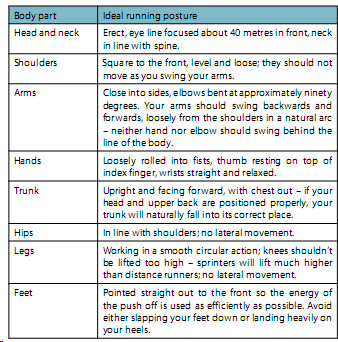Running can assist people in losing weight and staying in shape. Running increases your metabolism. Different speeds and distances are appropriate for different individual health and fitness levels. For new runners, it takes time to get into shape. The key is consistency and a slow increase in speed and distance. While running, it is best to pay attention to how one's body feels. If a runner is gasping for breath or feels exhausted while running, it may be beneficial to slow down or try a shorter distance for a few weeks. If a runner feels that the pace or distance is no longer challenging, then the runner may want to speed up or run farther.
Running can also have psychological benefits, as many participants in the sport report feeling an elated, euphoric state, often referred to as a "runner's high". Running is frequently recommended as therapy for people with clinical depression and people coping with addiction. A possible benefit may be the enjoyment of nature and scenery, which also improves psychological well-being.
Running Posture
- S-like body position with slightly bent knees
- Forward lean from the ankles to employ gravity and work with it not against it
- Pulling or lifting feet up under the hip not behind the buttocks
- Ball of foot landing under the body's GCM - general center of mass.
Breathing Technique
- Breathe in rhythm with foot strike on a ratio of 3:2; for three steps inhale and for two steps exhale.
- For a faster pace of running use 2:1 rhythmic breathing.
- Diaphragmatic breathing from the depths of the stomach, and not the chest.
- Breathe through the nose and mouth.
Warm Up and Stretching
- Warm up with Jumping Jacks 1x50 before the run.
- Stretch the quadriceps, hamstrings and calves before the run.
- Walk for 5 minutes before the run.
- Stretch the quadriceps, hamstrings and calves after the run.
High-Intensity Interval Training (HIIT)
HIIT is an exercise strategy that is intended to improve performance with short training sessions. HIIT is a form of cardio which is beneficial to burning fat in a short and intense workout. Usual HIIT sessions may vary from 9–20 minutes. The original protocol set a 2:1 ratio for work to recovery periods. For example, a runner would alternate 15-20 seconds of hard sprinting with 10 seconds of jogging or walking.
- 5 minutes warm up of walk to jog.
- 30 seconds sprint by 30 second walk; repeat 6 ~ 8 times
- 5 minutes cool down of jog to walk.
Intermediate HIIT Workout
Advance HIIT Workout
Tabata HIIT Workout





